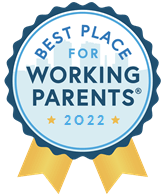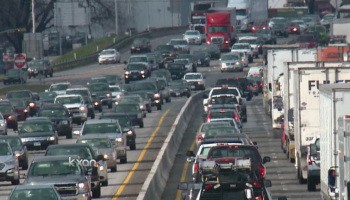What the Smart City Challenge Means for Austin Now and Long-Term

The AYC community is making our presence known in the greater Austin community. It is an honor and privilege to be a representative of AYC in so many diverse conversations and represent our members in planning for the long-term success of our city.
One of those opportunities is the Department of Transit’s Smart City Challenge.
Right now, Mayor Steve Adler and a delegation from the city’s transportation department are up in Washington, DC in pursuit of the DOT’s Smart City Challenge, the $50 million competition to drive the future of transportation, if you’ll pardon the pun. The Smart City Challenge offers one lucky city the chance to be for the future of transportation what Detroit is for making cars, Los Angeles is for the film industry and Nashville is to country music. Good-paying jobs, broader opportunity, and a flood of private investment would surely come to the city that wins the Smart City Challenge, which makes what I’m about to say sound really strange.
Because of the work our members are doing, I am fortunate to sit at the table and have the opportunity to share the vision for Austin.
Ultimately, it doesn’t matter if Austin wins the Smart City Challenge. Sure, getting $50 million from the federal government (actually, $40 million from DOT and $10 million from Paul Allen’s Vulcan Inc.) would help Austin manage its technological transportation transformation quicker, bigger, and better. But the real truth is Austin has to undergo this transformation regardless of whether it wins the Smart City Challenge.
The basic fact is that Austin has been growing faster than any other big city in the United States for the last five years and shows no signs of slowing. The population of greater Austin blew past 2 million last year, and it’ll probably double by 2030.
Meanwhile, traffic congestion is our biggest problem. According to a recent survey by the City of Austin, fewer than one in five residents is satisfied with the city’s handling of traffic flow, and no one can figure out why it’s that high. I-35 through downtown Austin is the most congested road in Texas one of the worst in the country.
Long story short, we have too many people for our roadways, and more people are on the way who will fill up any capacity we add to I-35 and our major transportation corridors. No city in the history of the world has paved its way out of traffic problems, and Austin won’t be the first.
But Austin can be the country’s first “smart city” when it comes to urban mobility. The City’s Smart City application outlined several groundbreaking advancements that we can achieve without literally breaking any ground. Here are some of the ways the city—in partnership with dozens of companies including AT&T, Ford, General Motors, Google, IBM, Lockheed Martin, and Siemens—envision using technology to help people get around easier:
- Going big on big data (imagine traffic lights that automatically adjust to weather, congestion and collisions and personalized traffic updates sent to you every morning based on your usual commuting patterns)
- Putting driverless vehicles into wide use, starting with autonomous shuttle buses at the airport
- By treating mobility like a service (and not a depreciating asset that’s parked 95% of the time), turning your bus pass into a bus-vanpool-ridesharing-bike sharing-car rental-and whatever else they invent pass.
- And linking all of these services with Park & Rides that connect you with all these mobility options—as well as on-demand grocery delivery and other conveniences to cut down on extra trips to do errands.
When fully implemented, these technological advancements would provide greater opportunities that are now limited by access to having a working car—not to mention the time to navigate our clogged roads. But here’s the best part, and I was pretty excited to hear this myself: Austin is already doing all these things.
In some form, every one of those transportation transformations is already underway in Austin. The City of Austin just partnered with the University of Texas at Austin on a big data project. Google is testing driverless cars in our neighborhoods, and General Motors and Lyft are exploring driverless ridesharing. And the City’s transportation department has been working towards linking all mobility options to Park & Ride centers.
It might seem like Austin never gets around to doing the big projects, but no one ever needs permission to start innovating. As the Mayor likes to say, innovation is in our DNA. It would be great to get the $50 million from the DOT, but if we don’t win the Smart City Challenge we should move full speed ahead into the future. We’ve already begun, and we can’t afford to turn back now.


